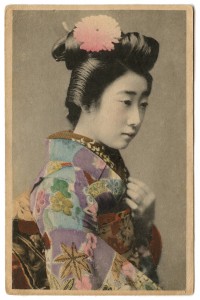 Kimono is one of the defining characteristics of a geisha. Geisha wear kimono with a neckline that dips low on the back to show off the nap of the neck. That part of the neck is as sensual for Japanese men as the breast is to Western men. Geisha have a formal kimono (called de) that shows off the nap of her neck. This is the kimono that demands the elaborate hair styles and the white makeup. The kimono worn the rest of the time is similar to the traditional Japanese kimono. It may even be more subdued. Her underkimono shows at the collar, sleeves, and hem.
Kimono is one of the defining characteristics of a geisha. Geisha wear kimono with a neckline that dips low on the back to show off the nap of the neck. That part of the neck is as sensual for Japanese men as the breast is to Western men. Geisha have a formal kimono (called de) that shows off the nap of her neck. This is the kimono that demands the elaborate hair styles and the white makeup. The kimono worn the rest of the time is similar to the traditional Japanese kimono. It may even be more subdued. Her underkimono shows at the collar, sleeves, and hem.
Kimono is the largest expense of being a geisha. They are made from the best silk.
For those who are wondering what is under the layers of kimono, nothing at all. Geisha, apparently, don’t wear underwear. It disrupts the lines of the kimono. The most intimate layers for the geisha are called hada-juban and the naga-juban. Apprentice geisha have the most elaborate kimono with long sleeves.
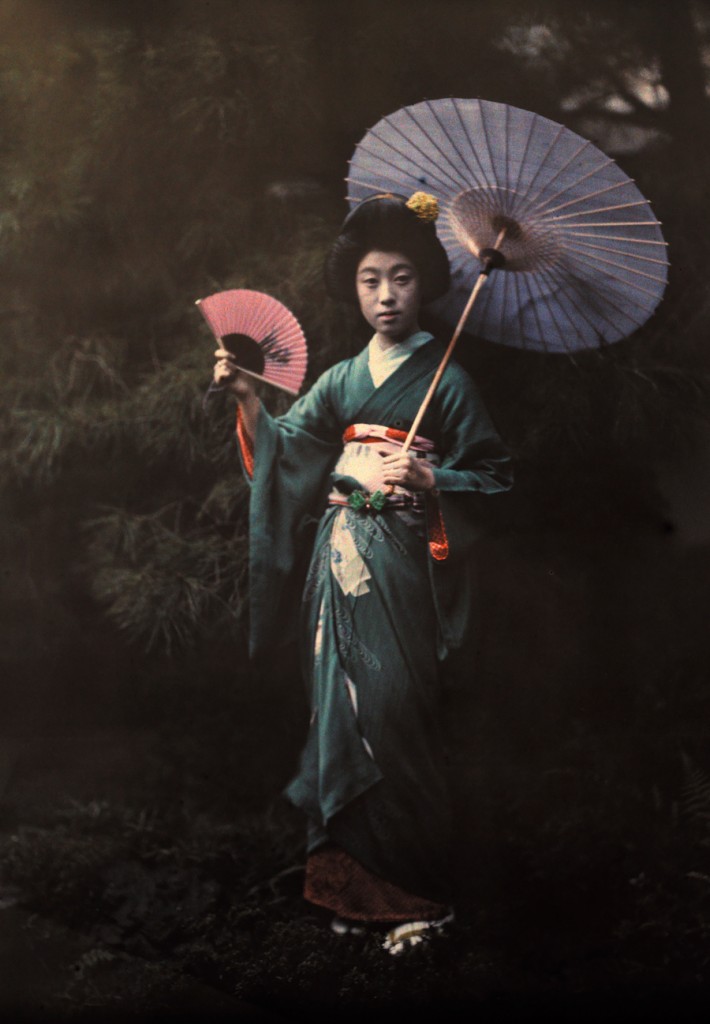
Geisha dress with asymmetry. Geisha show slightly more of her neck. The righthand side of the underkimono collar shows a little more in the front. The geisha kimono requires a different way of walking, according to Liza Dalby. Dalby is one of the few Westerners who have become geisha. She says that over time, geisha bodies become adapted to the kimono. Many told her that western skirts and belts were uncomfortable.
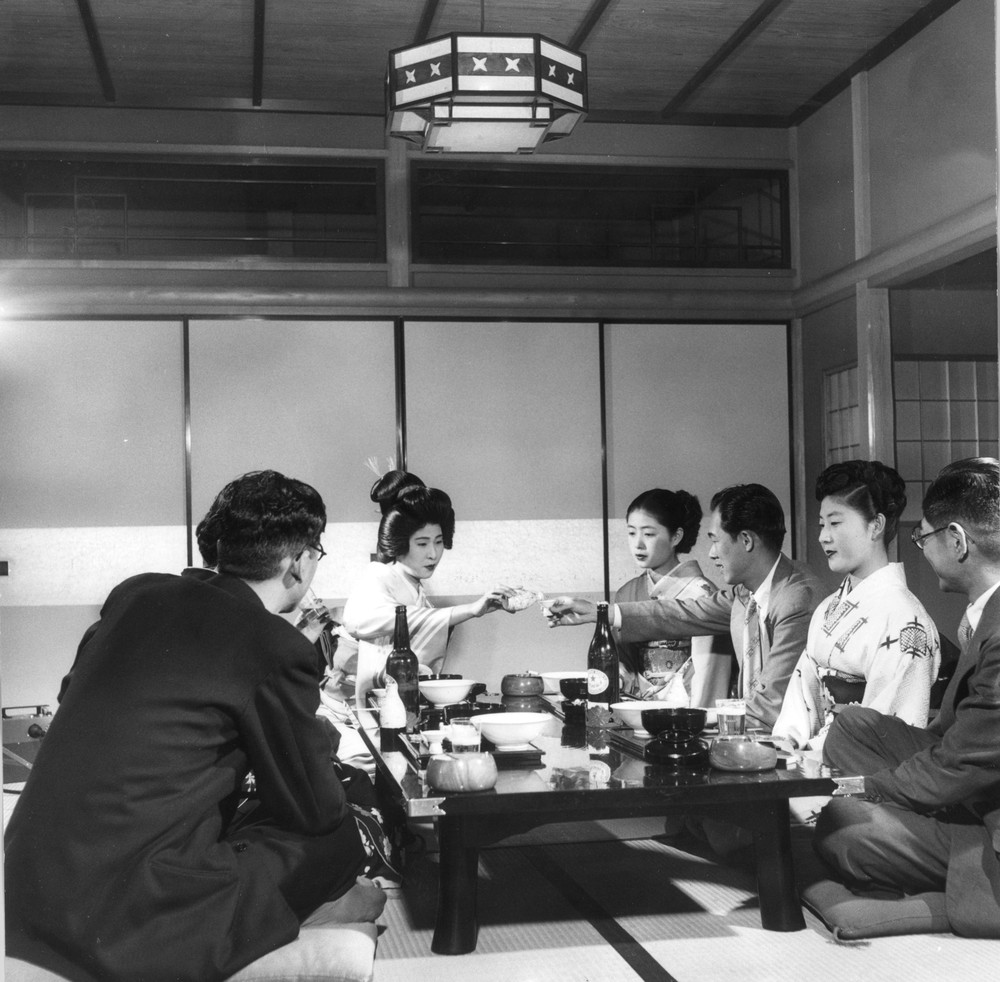
The kimono is prone to wear. Kneeling wears the front of the skirts, makeup mars the collar, and the hem is prone to catching dirt and fraying. Not to mention the sleeves (especially the apprentice kimono) can find themselves in food. This adds to the expense of owning kimono.
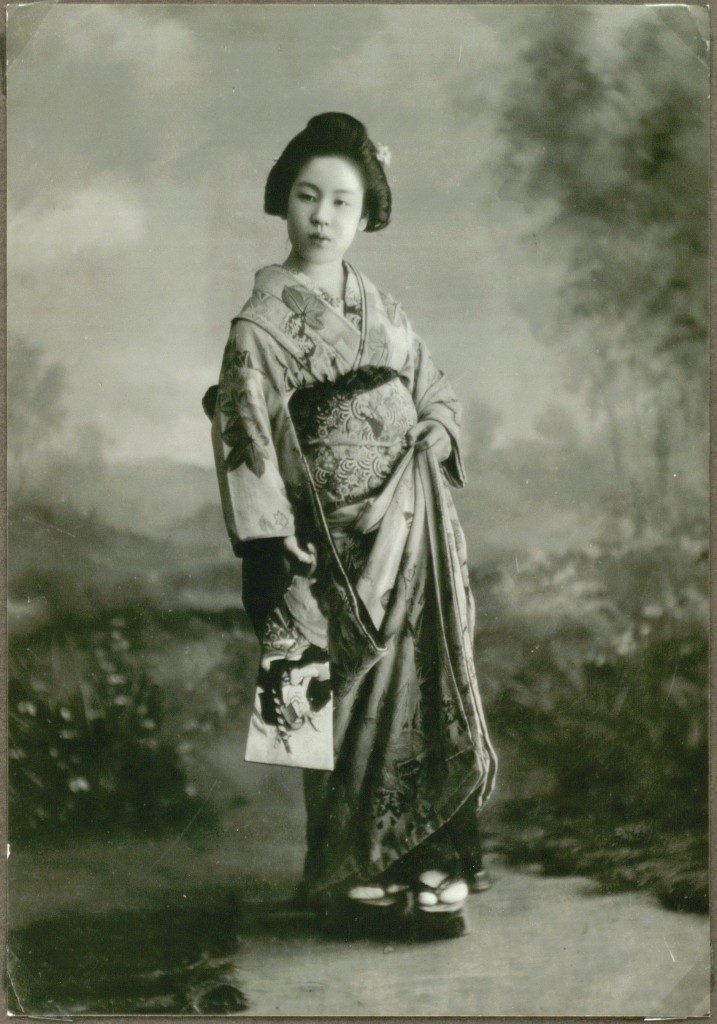 Of course, the geisha’s kimono is not complete with the obi. The obi is a long piece of silk tied around a geisha’s waist. It is worn lower than obi worn by other traditional Japanese women. The obi helps hold the kimono closed and provides further elegance to a geisha’s lines. The obi also lends support for the back. Sitting on the floor, straight backed can be hard on the muscles without this stiff garment’s help. Obi can be as expensive as kimono and just as elaborate. The apprentice obi is longer than a full geisha. It has a large back knot. The apprentice obi is richly decorated and can be longer than 16.4 feet. A full geisha obi measures 13.14 feet long and is tied into the simpler box knot. The obi knot is always tied in the back by a professional dresser or another geisha. Front knots were a sign of prostitution. A prostitute couldn’t be bothered to tie elaborate, padded knots behind her back after every client.
Of course, the geisha’s kimono is not complete with the obi. The obi is a long piece of silk tied around a geisha’s waist. It is worn lower than obi worn by other traditional Japanese women. The obi helps hold the kimono closed and provides further elegance to a geisha’s lines. The obi also lends support for the back. Sitting on the floor, straight backed can be hard on the muscles without this stiff garment’s help. Obi can be as expensive as kimono and just as elaborate. The apprentice obi is longer than a full geisha. It has a large back knot. The apprentice obi is richly decorated and can be longer than 16.4 feet. A full geisha obi measures 13.14 feet long and is tied into the simpler box knot. The obi knot is always tied in the back by a professional dresser or another geisha. Front knots were a sign of prostitution. A prostitute couldn’t be bothered to tie elaborate, padded knots behind her back after every client.
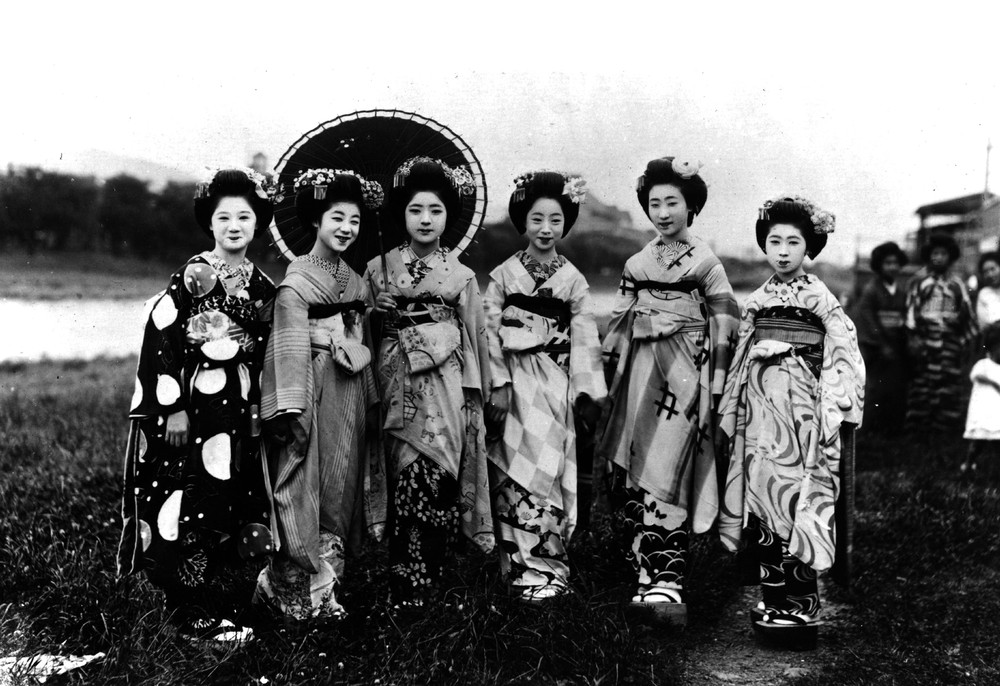
The women behind the kimono is what makes a geisha kimono special. The dance training and other movement training geisha undergo allows her to wear the kimono elegantly, gracefully, and professionally. The geisha’s kimono is no different from a business suit. It is a visual signal of her professionalism.
If you are interested in learning more about kimono, I briefly touch on the history and cultural importance of kimono in another post.
Geisha are living embodiments of the Japanese arts. They help keep traditional dance, tea, music, and dress alive in our modern world. As time moves forward, we need to keep touch with the roots of our respective cultures. Geisha are one means for the Japanese to keep in touch with their cultural roots. Cultural roots are important to help us remember where we came from and provide direction as to where we are going.
References
Assmann, S. (2008). Between Tradition and Innovation: The Reinvention of the Kimono in Japanese Consumer Culture. Fashion Theory. 12[3] p. 359-376.
Dalby, L. (1992). Kimono and Geisha. The Threepenny Review. 51. p. 30-31.
Goldstein-Gidoni, O. (2001). Kimono and the Construction of Gendered and Cultural Identities. Ethnology. 38[4]. p. 351-370.
Lockard, L. (2009). Geisha: Behind the Painted Smile.
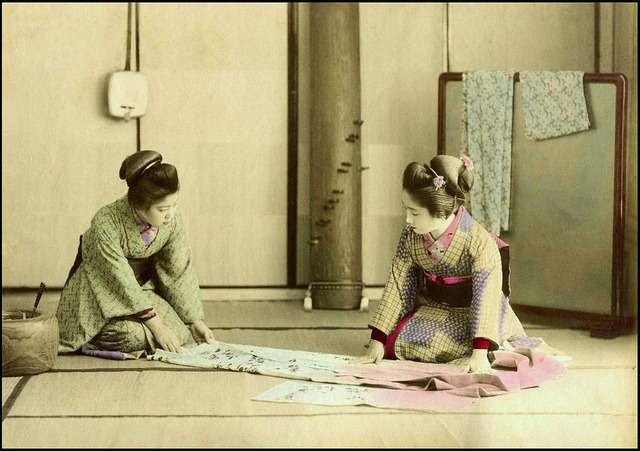
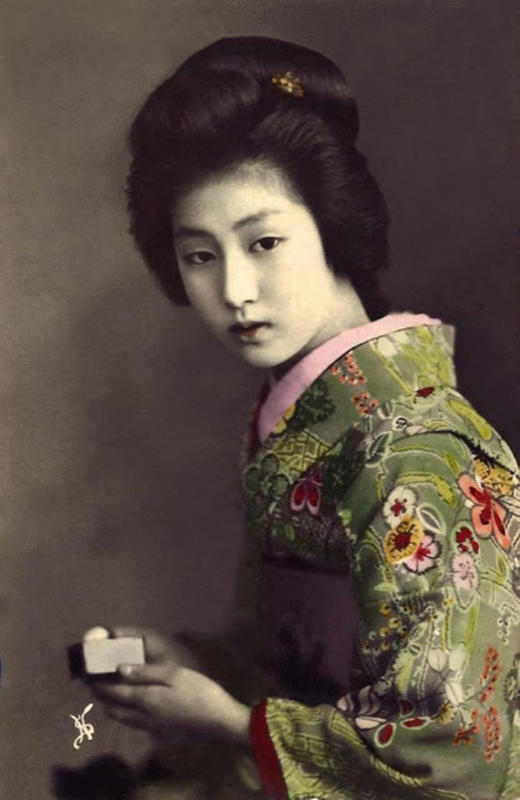
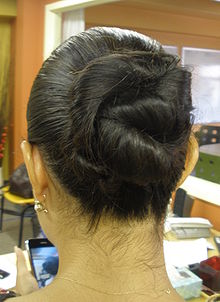
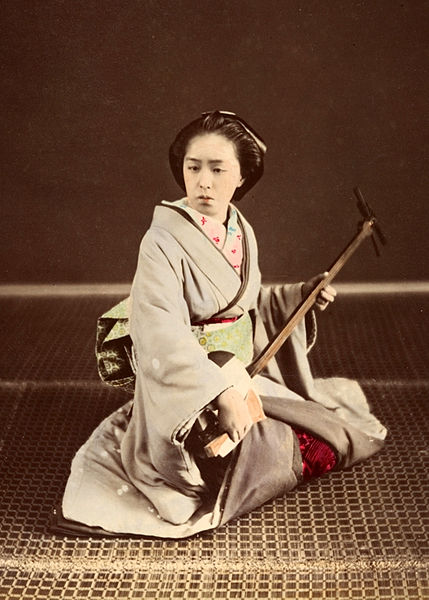
Enjoyed the history! Thank you!
I’m glad you found the article useful!